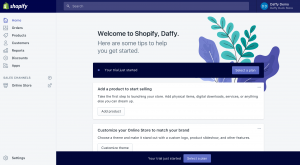Search engine optimization (SEO) can be complex, but columnist Marcus Miller simplifies it by breaking down its key elements into four main categories.

SEO can be complicated — in many cases, overcomplicated. How many ranking factors are involved in generating strong organic search results? Ten? Twenty? Thirty? Two hundred?
A quick search for “SEO ranking factors” will give you all of these answers and myriad others. There is a lot of information out there. And the reality is, while there are likely hundreds of variables working together to determine final placement, much of what is suggested is guesswork. And certainly, not all ranking factors are relevant to every business.
Point being, it is easy to get lost down an algorithmic rabbit hole. It’s information overload out there, and you can spend all your time on a research hamster wheel and achieve very little.
In this article, I want to simplify things and outline the four main areas you should be focusing on with your SEO. Really, when it comes down to it, SEO is actually pretty simple at a strategic level.
The four pillars of SEO
The four key areas of SEO that site owners need to consider are:
- technical SEO: How well your content can be crawled and indexed.
- content: Having the most relevant and best answers to a prospect’s question.
- on-site SEO: The optimization of your content and HTML.
- off-site SEO: Building authority to ensure Google stacks the deck in your favor.
Of course, these four areas have some complexity and overlap, but understanding your strengths and weaknesses in relation to them is key to focusing your efforts.
1. Technical SEO
Technical SEO can seem a little daunting, but really, what we are talking about is ensuring that a search engine can read your content and explore your site. Much of this will be taken care of by the content management system you use, and tools like Screaming Frog and Deep Crawl can explore your website and highlight technical problems.
The main areas to consider here are:
- crawl. Can a search engine explore your site?
- index. Is it clear which pages the search engine should index and return?
- mobile. Does your site adapt for mobile users?
- speed. Fast page load times are a crucial factor in keeping your visitors happy.
- tech. Are you using search engine-friendly tech or CMS for your website?
- hierarchy. How is your content structured on your website?
If you are a small business using WordPress for your website, technical SEO should be something you can check off your list pretty quickly. If you have a large, bespoke website with millions of pages, then technical SEO becomes much more important.
Much of what is considered “technical SEO” here is actually part of your website design and development. The trick is to ensure your developer understands the interplay between website design, development and SEO and how to build a blisteringly fast and mobile-optimized site.
2. On-site SEO optimization
Your website should be optimized as a whole and at an individual page level. There is some crossover here from your technical SEO, and you want to start with a well-structured content hierarchy for your site.
Assuming you have a well-structured site, applying sensible optimization is again relatively straightforward. The main areas to focus on here are:
- keyword research. Understand the language of your target audience.
- descriptive URLs. Ensure each URL is simple and descriptive.
- page titles. Use keywords naturally within the page title.
- meta descriptions. Craft meta descriptions like they were ad copy to drive clicks.
- content optimization. Sensibly use keywords and variations in your page copy.
- good user experience (UX). Ensure your site is a joy to use and navigate.
- strong calls to action. Make it easy for your users to know what to do next.
- structured data markup. Tap into the latest SERP features to improve click-through rates.
When optimizing your site, take time to consider your customers. If you are a local business, then local SEO is more important, and your address and location become crucial optimization points.
With solid technical SEO in place, layering your on-page optimization is straightforward. Use tools like Screaming Frog to crawl and identify weaknesses and methodically work through your pages.
3. Content
Content is king. That’s the saying, right? It’s true in a way. Your website is really just a wrapper for your content. Your content tells prospects what you do, where you do it, who you have done it for, and why someone should use your business. And if you’re smart, your content should also go beyond these obvious brochure-type elements and help your prospective customers achieve their goals.
For service businesses, we can loosely break your content down into three categories:
- Service content. What you do and where you do it.
- Credibility content. Why a prospect should engage with your business.
- Marketing content. Content that helps position you as an expert and puts your business in front of prospects earlier in the buying cycle.
It’s really important to realize that SEO is important for all of these kinds of content, but it is often only really considered for service-type content. SEO is often forgotten when it comes to credibility content like reviews, testimonials and case studies.
As a simple example, I recently renovated a Victorian-era house in the UK, and throughout the process, I was looking for various professionals that could demonstrate relevant experience. In this case, having a well-optimized case study showing renovation work on a similar house in the local area would serve as great long-tail SEO content — it also perfectly demonstrates that the contractor can do the job, which perfectly illustrates their credibility. Win-win.
Ensure you optimize all of your marketing content, including case studies, portfolio entries and testimonials — not just the obvious service pages.
A solid content marketing and SEO strategy is also the most scalable way to promote your business to a wide audience. And this generally has the best ROI, as there is no cost per click — so you are scaling your marketing without directly scaling your costs. This kind of SEO strategy is not right for every business, but when it is a good fit, it’s almost unbeatable.
Here are the key takeaways:
- Optimize all content across the entire customer journey.
- Determine whether content marketing via organic search is a good fit.
We still see way too many paint-by-numbers approaches to SEO, where local businesses are paying agencies to pump out blog posts that are strategically not a good fit. Ensure that all of your content is optimized, and if you are doing content marketing, ensure it is a good fit for your marketing tactics.
4. Off-site authority building
Eventually, all SEO rivers run to this one spot: authority building. Building your authority, in large part, involves link building. Links are still a crucial component to developing strong organic rankings; however, links can be the hardest part of SEO to get right.
It really is important here to get your link philosophy dialed in before you start, as this can truly make or break your link-building efforts. While link building is a deep topic that we can’t cover in depth here, if you can at least develop a positive link-building philosophy, you are already ahead of the majority of your competition.
The best way I have ever seen to describe the right link-building mindset was penned by the late, great Eric Ward: “Connect what should be connected.”
This philosophy is beautiful in its simplicity, and it serves to correct the “more, more, more” mentality of link building. We only want links from relevant sources. Often, this means that in order to scale our link-building efforts beyond the obvious tactics, we need to create something that deserves links. You have links where it makes sense for you to have links. Simple.
Wikipedia has millions of links, yet I am pretty sure they have never done any link building. This is because they have reams of useful content that gets linked. These are real, natural links that enrich the linking page, provide further context and serve as the real connective tissue of this hyperlinked world we live in.
This kind of natural link should be the backbone of your link-building efforts. This may mean you have to revisit the content on your site and create something of value first, but if you can nail that, then you are half way home.
Any safe, scalable link-building strategy should be built on this mindset.
Key takeaways here:
- Make sure you are building the kind of real links that make sense in the real world and won’t upset the qualitative and sometimes punitive parts of the algorithm.
- Ensure you have content that deserves to rank and deserves to be linked to.
Summary
SEO does not need to be overly complex. There are four key areas of SEO that you need to consider, and there is a structured, methodical process that can be followed to optimize your site.
I sincerely hope this post helps you cut through the noise, improve your rankings and generate more business from organic search!
[Article on Search Engine Land.]
Some opinions expressed in this article may be those of a guest author and not necessarily Marketing Land. Staff authors are listed here.
Marketing Land – Internet Marketing News, Strategies & Tips
(109)
Report Post









